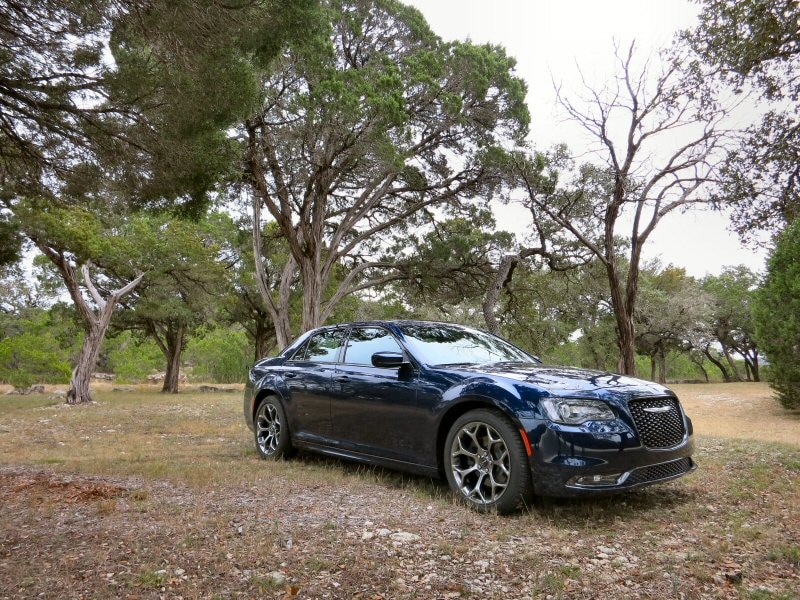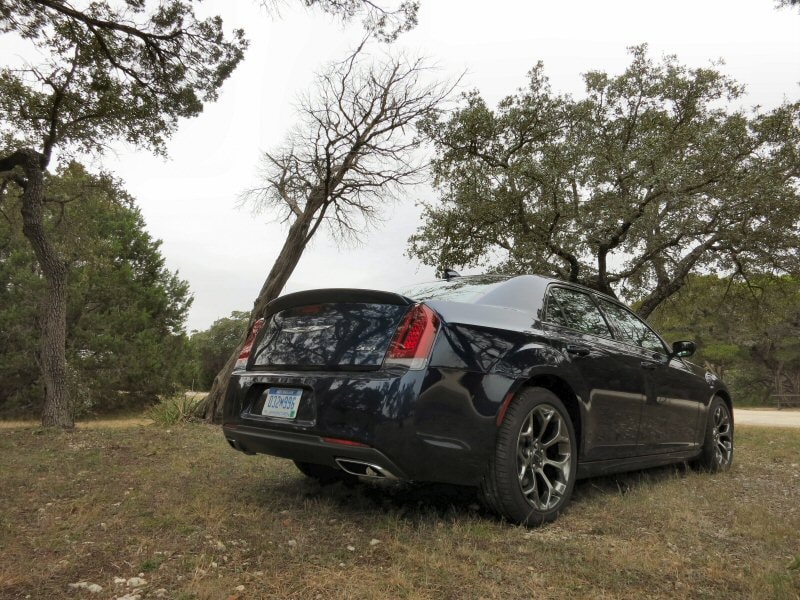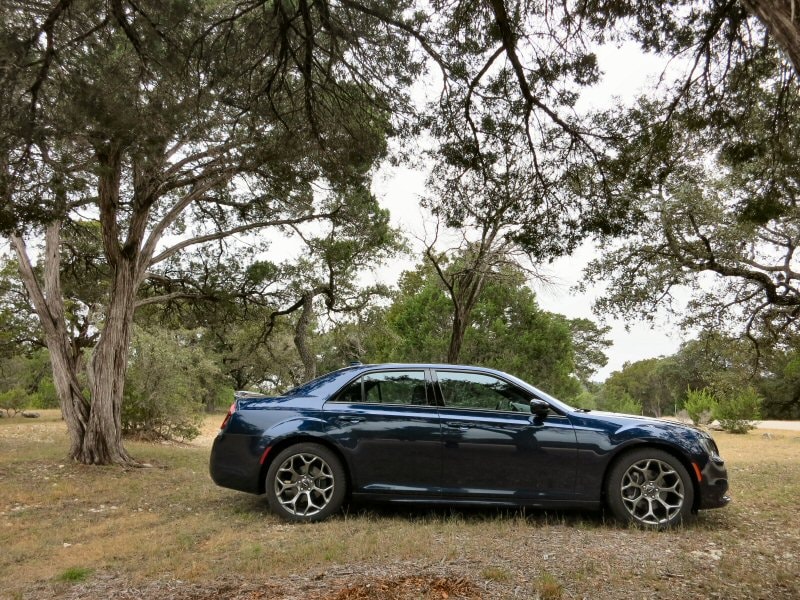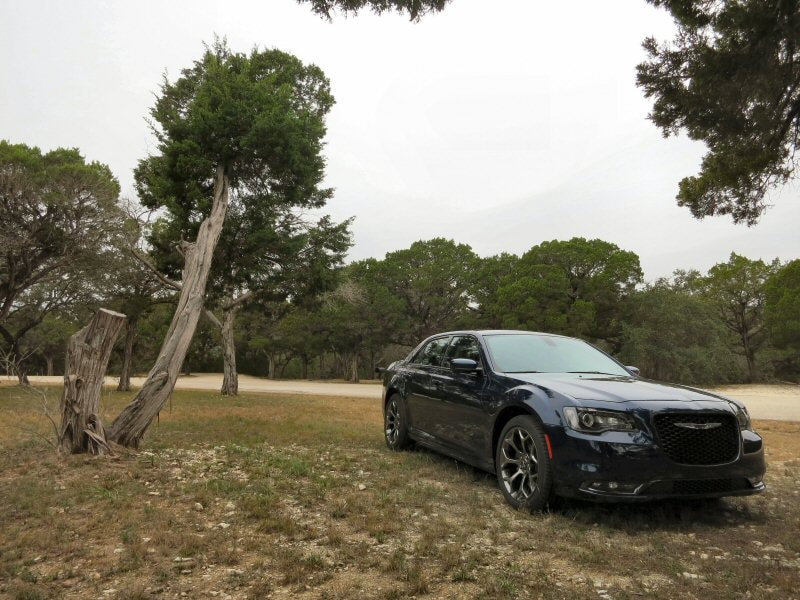Recent Articles
Popular Makes
Body Types
2015 Chrysler 300 Full-Size Sedan First Drive and Review

2015 Chrysler 300 ・ Photo by Benjamin Hunting
Two paths have diverged on an assembly line, and wise that it should not travel both, FCA has finally unshackled its two full-size flagship sedans from each other’s destinies. The 2015 Chrysler 300 no longer follows its equally-new Dodge Charger platform-mate in lock-step, and its identity is better for it. With Dodge assuming the mantle of Fiat Chrysler Automobile’s performance division (and all the Hellcat ferocity that implies), the Chrysler 300 is free to emulate the mid-size 200’s example and seek out customers more concerned with comfort than tire-smoking chaos.
Cushy, Not Crazy
The 2015 Chrysler 300’s recent refresh and model shuffle clearly reflects this new set of priorities. Gone is the fire-breathing SRT model, and assuming its place at the top of the family cars line-up is the new 300C Platinum trim. The 300C Platinum goes full-luxury with its interior trappings, including waffle-board leather seats, a higher standard of wood trim compared to other 300 models, and Nappa leather on the dash, the door panels, and the (available) two-tone steering wheel. It’s old-school in its philosophy, but not in its execution, with the sedan’s spacious cabin proving to be an ultra-comfortable place to spend some time.
The sense of smooth insulation from the outside world continues with the revised 300S, ostensibly the sportiest model in the Chrysler 300 family with a stiffer suspension, 20-inch rims, unique styling cues inside and out, and more aggressive steering and transmission programming. Still, when driven in a relaxed manner there’s really no indication that you’re piloting anything other than a big, composed car – a feeling that unfortunately also extends into the heavy 300S’ performance envelope during more aggressive maneuvers.
Sitting at the entry-level is the Chrysler 300 Limited, a model that’s nicer than previous affordable editions of the sedan, but one that’s somewhat less stylish inside and out. You get access to the same Uconnect infotainment interface available with the 300S and 300C – and it’s one of the best in the business – but there’s a bit of a fleet feel to the Limited that will appeal mostly to those who prize affordability over features in a large vehicle.
In addition to all of the comfort gear that has been stuffed into the 300, Chrysler has also revamped the sedan’s safety technologies. Like before, you can get the Chrysler 300 with a blind spot monitoring system and forward collision warning system, but with the introduction of stop-and-go capability for the car’s adaptive cruise control there’s now an automatic braking feature to help prevent accidents. Lane departure warning is also joined by a lane departure assistance feature that can guide the 300 back from the brink should it stray from the straight and narrow.

Photo by Benjamin Hunting
Familiar Face
All models of the 2015 Chrysler 300 benefit from the same mild re-styling effort, which preserves last year’s stampings but offers a 30 percent larger front grille (with a blacked-out honeycomb filler for the 300S), thinner chrome up front, and the availability of LED fog lights to match the car’s LED-ensconced HID headlights. LED taillights are also available, exhaust tips are now rectangular in contrast to the rounder designs found in the previous model, and the 300S gets a trunk-lid spoiler that’s honestly a little awkward both in profile and when seen in the rearview mirror.
When it was first introduced in 2005, the Chrysler 300’s slab-sided silhouette was a bold statement from a company that hadn’t made a full-size splash in years. A decade on, however, it almost feels as though each respective refresh has moved the 300 farther away from the soft-touch brutality of its original first impression, diluting the car’s original attitude. The 2015 model certainly offers visual appeal, but it’s no longer the bold statement that it once was – a side effect of what can happen when attempting to evolve an icon.

Photo by Benjamin Hunting
The Same, But Different
Under the skin, the 2015 Chrysler 300 is essentially unchanged compared to the model that came before it. A 3.6-liter Pentastar V-6 continues to serve as the car’s value drivetrain, although with output of 292 horsepower and 260 lb-ft of torque it’s hardly a consolation prize. 300S models equipped with the six-cylinder engine see an additional eight ponies and four more pounds of twist thanks to a revised exhaust system.
If you’re really looking for grunt you’ll want to opt for the carry-over 5.7-liter Hemi V-8, which offers 363 horsepower and 394 lb-ft of torque in the 300C and 300S (and of course the 300C Platinum trim). Acceleration from this unit is both linear and plentiful, and while it’s not a rocket it’s certainly up to the task of motivating the portly 300 with authority.
The biggest mechanical news for the 2015 Chrysler 300 is the decision to make last year’s eight-speed automatic standard across the board, giving the eight-cylinder edition of the car the same smooth-shifting capability that the V-6 offered in 2014 (and accounting for much of its improved character in daily driving). The move also translates into a one mile per gallon increase in city fuel efficiency for the Hemi-powered 300 models, boosting their rating to 16-mpg around town and 25-mpg on the highway. All-wheel drive remains in the mix for the 2015 300 (which comes with rear-wheel drive out of the box) but you’ll have to order a six-cylinder car to get it: Chrysler told me that there was simply not enough demand for all-wheel drive Hemi cars to justify its continued presence on the options list.

Big And Traditional
If you’re looking for a modern take on the large, traditional rear-wheel drive American sedan with a premium feel, then the 2015 Chrysler 300 has you covered. In fact, I’d wager that this car’s bigger competitor is not longer its in-house Charger sibling, but rather the $38,0000 Hyundai Genesis, an equally-hefty four-door that provides similar drivetrain choices with perhaps more of a focus on luxury. Thrift is also on the 300’s side, with a starting MSRP of $31,395 putting it more in line with the Chevrolet Impala and the Ford Fusion, and the 300 Platinum’s $42,395 sticker undercuts the top-tier Genesis even when equipped with a V-8. Relieved from the pressure of living up to the SRT division’s high performance expectations, the more focused Chrysler 300 moves on to the next chapter of its life on more certain footing.

Photo by Benjamin Hunting